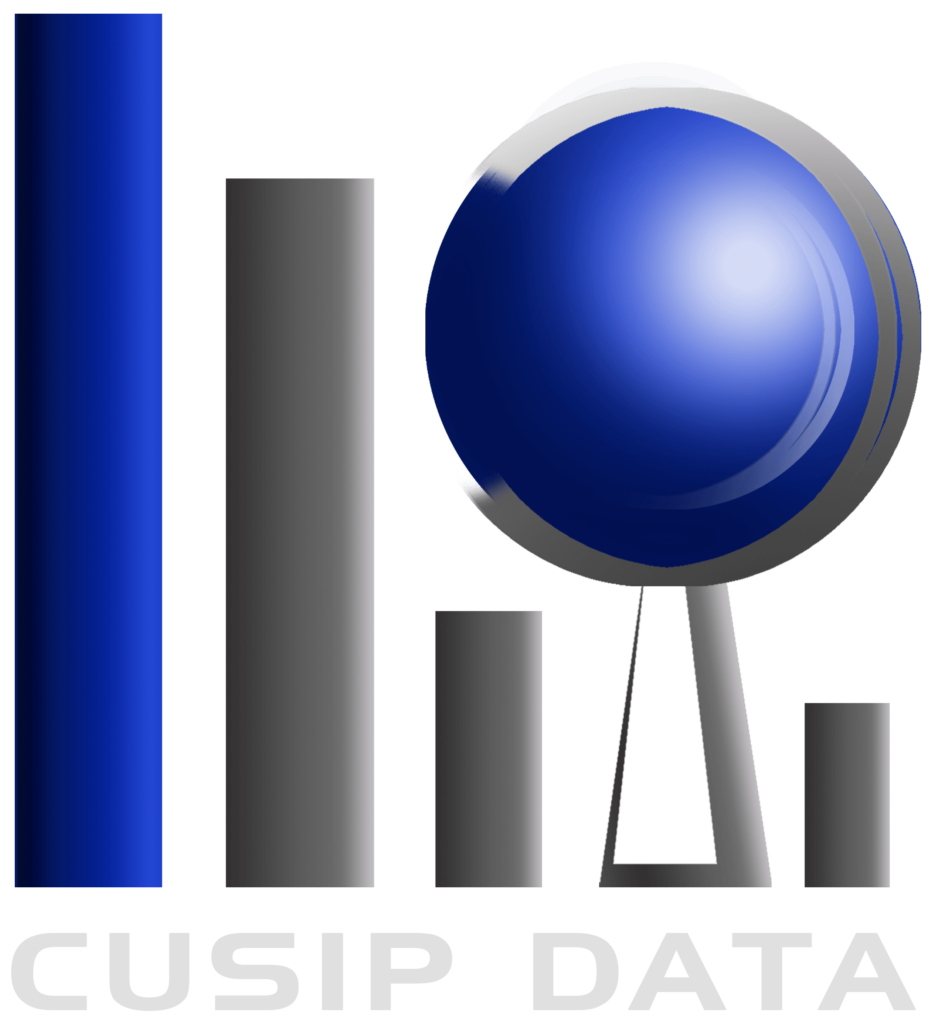- HOME
- About us
- Services
- COVID-19 and CUSIP Codes: Impacts on Mortgage Loan Securities Markets
- The Significance of CUSIP Numbers in Mortgage-Backed Securities Trading
- CUSIP Codes and Consumer Protection in Mortgage Lending
- CUSIP Codes and ESG Factors in Mortgage Loan Investments
- CUSIP Codes and Loan Pools: Maximizing Value in Mortgage Loan Sales
- CUSIP Codes and Mortgage Loan Origination: What Homebuyers Should Ask
- CUSIP Codes and Risk Management in Mortgage Loan Portfolios
- CUSIP vs. Ticker Symbols: Key Differences in Mortgage Loan Securities
- Emerging Trends in CUSIP Use within Mortgage Loan Securities
- How CUSIP Codes Affect Mortgage Loan Transparency for Homebuyers
- How CUSIP Codes Help Investors Navigate Mortgage-Backed Securities
- How CUSIP Numbers Can Help Consumers Understand Mortgage Loan Risks
- How CUSIP Numbers Facilitate Mortgage Loan Due Diligence for Sellers
- Legal and Regulatory Aspects of CUSIP Codes in Mortgage Loan Sales
- Liquidity Enhancement: CUSIP Codes in the Mortgage Loan Sales Process
- Streamlining Mortgage Loan Sales with CUSIP Number Integration
- The Evolution of CUSIP Codes in Mortgage-Backed Securities Markets
- The Future of CUSIP Codes: Innovations in Mortgage Loan Markets
- The Impact of CUSIP Standardization on Mortgage Loan Securities
- The Importance of CUSIP Codes in Selling Mortgage Loans
- The Role of CUSIP Codes in Mortgage Loan Documentation for Borrowers
- The Role of CUSIP Codes in Mortgage Loan Securitization
- The Role of CUSIP Codes in Mortgage-Backed Securities
- Transparency and CUSIP Codes in the Secondary Mortgage Loan Market
- Understanding CUSIP Codes: A Primer for Mortgage Loan Securities
- Using CUSIP Codes to Track and Manage Mortgage Loan Information
- Using CUSIP Data to Evaluate Mortgage Loan Pricing Strategies
- What Consumers Should Know About CUSIP Numbers in Mortgage Loans
- CUSIP & Securitization of Mortgage Loans – A Journey into Financial Clarity
- The Essential Interplay between CUSIP & Securitization of Mortgage Loans
- CUSIP & Securitization of Mortgage Loans – Structuring a Transparent Market Landscape
- The Synchrony of CUSIP & Auto Loan Securitization speeds up Finance
- The alignment of “CUSIP & Securitization of Auto Loans” evolves the realm of finance
- The Synergistic Integration of CUSIP & Auto Loan Securitization
- Analyzing CUSIP and Securitization of Credit Card Loans
- CUSIP Numbers and Asset Allocation Strategies
- The Global Reach of CUSIP Numbers
- How Corporate Actions lead to changes of CUSIP Number
- Protect CUSIP Numbers for Security and Fraud Prevention
- CUSIP Data: Key Insights for Mortgage Loan Investors
- The Role of CUSIP Numbers in Regulatory Compliance
- The Importance of CUSIP Code in Risk Management
- CUSIP and Mortgage Loans: Standardization in a Complex Financial Landscape
- CUSIP Data: Important approach to Mortgage Loan Investors
- Mortgage Loan Investor’s Guide: Essential Insights into CUSIP Data
- CUSIP and Securitization of Credit Card Loans: Navigating the Financial Matrix
- CUSIP Numbers in Mutual Funds and ETFs: A profound search into Fund Identification and Management
- CUSIP & Securitization of Auto Loans: Driving the Financial Future
- A Deep Dive into the Power of CUSIP Data in Risk Management
- The CUSIP Advantage of Navigating the Auto Loan Securitization Maze
- Mortgage-Backed Securities and CUSIP Codes: A Harmonious set of two
- Mastering CUSIP Codes: Tips and Tricks for Financial Professionals
- Fine-Tuning Your Auto Loan Investment Strategy with CUSIP Intelligence
- Blog
- FAQ
- Contact Us
The Evolution of CUSIP Codes in Mortgage-Backed Securities Markets


In the ever-shifting landscape of finance, adaptability, and innovation are the driving forces that shape the industry’s trajectory. CUSIP codes, those unassuming alphanumerics originally designed to identify and classify securities, have quietly undergone a fascinating evolution within the realm of mortgage-backed securities (MBS) markets.
This article embarks on a journey through time, tracing the remarkable evolution of CUSIP codes and their pivotal role in the dynamic world of MBS. These codes once considered simple tracking tools, have transformed into essential instruments for both traders and investors.
Beyond their initial function, CUSIP codes now serve as a cornerstone of transparency, risk assessment, and compliance in MBS markets. We’ll explore how they’ve adapted to meet the changing demands of investors and regulators alike, paving the way for more efficient and secure trading practices.
From the early days of MBS to the complex financial instruments of today, join us in unraveling the story of how CUSIP codes have evolved to become an indispensable part of the mortgage-backed securities market. We’ll discover how their adaptability and responsiveness continue to shape the industry, ensuring that it remains resilient and forward-thinking in the face of an ever-evolving financial landscape.
The story of CUSIP codes in the MBS market begins with their creation in 1967 by the American Bankers Association (ABA). Initially designed to uniquely identify stocks and bonds, CUSIP codes were soon adopted for use in the mortgage-backed securities market.
During this era, the mortgage market was experiencing significant growth, with lenders seeking ways to efficiently bundle and sell mortgage loans as securities. CUSIP codes provided a standardized way to identify these newly created MBS, ensuring clarity and precision in tracking and trading.
As the MBS market continued to expand, so did the use of CUSIP codes. These codes became an integral part of the securitization process, offering a consistent means of identification. Each MBS issued in a pool of mortgage loans received its unique CUSIP code, ensuring that no two securities were alike.
This standardization had a profound impact on the efficiency of the MBS market. Investors, lenders, and market participants could rely on CUSIP codes to accurately identify and trade securities. The risk of errors and confusion was significantly reduced, fostering confidence in the market.
The evolution of CUSIP codes in the MBS market was closely intertwined with technological advancements. The shift from manual record-keeping to computerized systems in the 1980s further enhanced the utility of CUSIP codes.
With the advent of computer systems, the processing and tracking of large volumes of MBS became more streamlined. CUSIP-coded data could be easily integrated into digital databases, providing investors with quick access to information about these securities.
The ability to perform rapid searches, conduct due diligence, and assess the creditworthiness of underlying mortgage loans became standard practices in the MBS market. CUSIP codes were at the forefront of this technological transformation, serving as the bridge between physical assets and digital records.
The MBS market faced a significant test during the financial crisis of 2008. However, CUSIP codes remained a pillar of stability during these turbulent times. In fact, their role became even more critical as investors sought transparency and accurate information about the securities they held.
Regulatory bodies recognized the importance of standardization and transparency in the aftermath of the crisis. CUSIP codes were embraced as a means of achieving these objectives. The demand for comprehensive data associated with MBS, all linked to CUSIP codes, surged.
Today, CUSIP codes continue to play a vital role in the MBS market. They have adapted to the changing landscape of finance, incorporating new features and data elements to meet the demands of investors and regulatory bodies.
The modern era has seen the integration of environmental, social, and governance (ESG) factors into the world of finance. CUSIP codes have evolved to incorporate ESG-related data, providing investors with insights into the sustainability and ethical aspects of MBS investments.
Furthermore, real-time updates and data analytics have become integral to the MBS market. Investors can access a wealth of information linked to CUSIP codes, allowing for more informed decisions and risk management. This real-time aspect ensures that market participants are equipped with the latest data to navigate changing market conditions.
As we look to the future, the role of CUSIP codes in the MBS market remains essential. These unique identifiers are poised to evolve further, integrating with cutting-edge technologies such as blockchain and artificial intelligence.
Blockchain technology can enhance the security and transparency of CUSIP-coded data, reducing the potential for fraud and errors. Smart contracts on the blockchain can automate various processes within the MBS market, further streamlining operations.
Artificial intelligence and advanced data analytics will unlock deeper insights from CUSIP-coded data, providing investors with a more comprehensive view of risk and performance. This enhanced data-driven decision-making will be a hallmark of the future MBS market.



Conclusion
As we bring our journey through the ever-evolving landscape of mortgage-backed securities (MBS) markets to a close, one thing becomes abundantly clear: the evolution of CUSIP codes has been instrumental in shaping this complex financial realm. These seemingly unassuming alphanumeric identifiers, officially known as Committee on Uniform Security Identification Procedures codes, have quietly revolutionized the way MBS are tracked, traded, and understood.
This article has taken us on a voyage through the remarkable transformation of CUSIP codes. From their humble beginnings as mere identifiers to their current role as catalysts for transparency, efficiency, and risk management in MBS markets, their evolution is nothing short of extraordinary.
Looking ahead, the future of CUSIP codes in MBS markets promises even more innovation. They are poised to play an even larger role in the integration of technology, enabling quicker, more secure transactions and providing investors with greater insights into their MBS portfolios.
In a financial landscape where adaptability is key, CUSIP codes continue to evolve and empower participants in the MBS markets.
